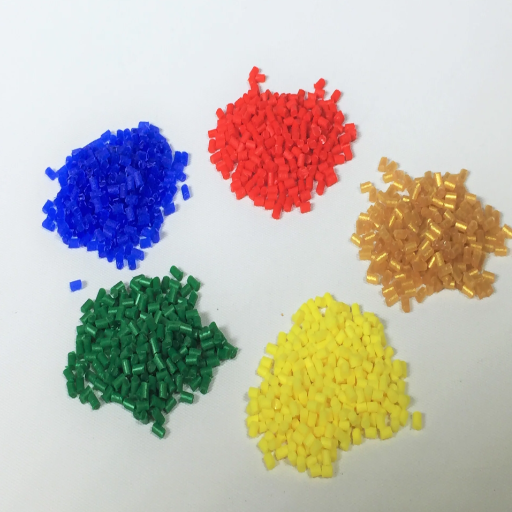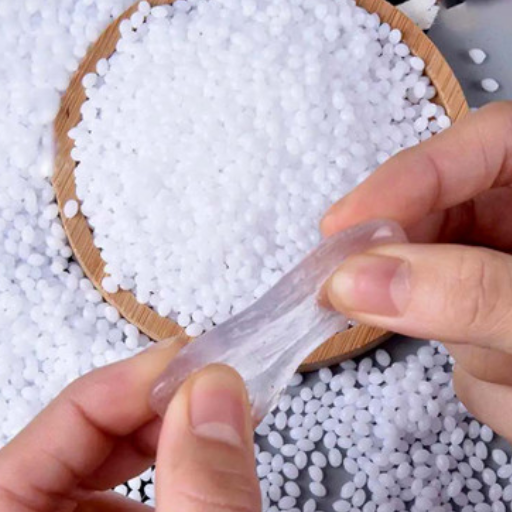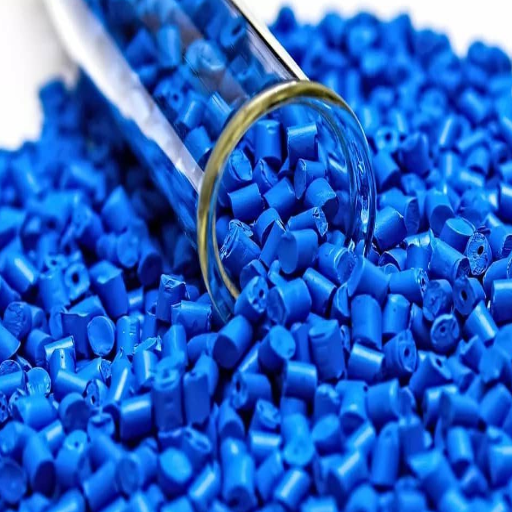Silicone and thermoplastic elastomer (TPE) are materials commonly used in different industries, and they have some unique features that put them to particular use. These two elastomers are, however, quite different from one another in such parameters as cost, chemical composition, temperature tolerance, and production processes, even if they are both recognized to be durable and flexible. This article aims to elaborate on the variables in detail while explaining the advantages and disadvantages possessed by each of them. By the end of the reading, the audience will be better acquainted with TPE and silicone characteristics, empowering them to choose the most suitable material for their requirements.
What are Thermoplastic Elastomers (TPE) and Silicone Rubber?
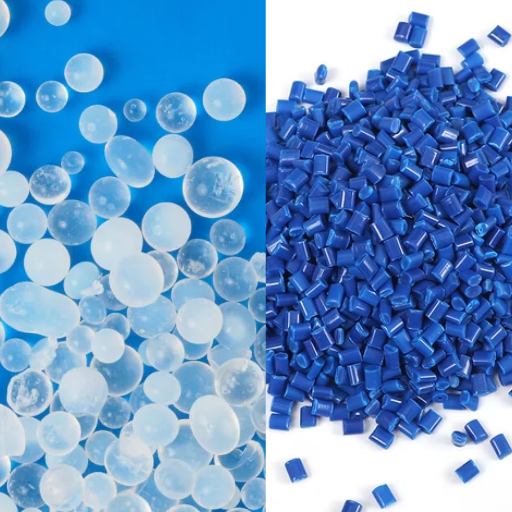
Thermoplastic Elastomers (TPE) are for rubber, and plastics are for formation. The processing capability of elastics characterizes this class of material. This means TPE can be reused by melting and reshaping it several times, making it very effective and recyclable. Such material is helpful in various applications that require flexibility, impact resistance, and durability, including parts for automobiles, medical devices, and even household items.
Silicone rubber, in contrast, is a synthetic elastomer made of silicon, oxygen, carbon, and hydrogen. It has well-known thermal stability, chemical resistance, and biocompatibility qualities. Moreover, silicone rubber is not chemically recyclable due to thermosetting properties, meaning it maintains its shape after cross-linking. Due to its inert and robust characteristics, silicone rubber is widely employed in food-grade products, medical implants, and high-temperature applications.
Definition and basic properties of TPE
Thermoplastic elastomers (TPEs) are a class of rubber-like polymers that can be molded as thermoplastics. Structurally, TPEs have one part that is hard and thermoplastic and another that is rubber-like; thus, TPEs are flexible, tough, and easy to mold. One of the leading advantages of TPE is the possibility of recycling and reshaping them through heat, making them an eco-friendly option. Apart from this, TPEs possess excellent tensile strength, fatigue, and a variety of hardness, which makes them appropriate for use in the automotive, consumer goods, and medical devices industries. These materials are crucial for many uses of their outstanding characteristics, such as lightweight and complex molding processes, such as injection molding.
Understanding silicone rubber and its characteristics
Silicone rubber is a highly effective material that can be used in a wide range of applications due to its distinct characteristics, including its ability to withstand extreme temperatures, high flexibility, and resistance to UV rays, ozone, and moisture. Because of its non-reactive and gel-grade biocompatibility, it is ideal for use in the medical industry. Silicone rubber is suitable for use in industry as it can easily be operated in the temperature range of -60°C to 200°C. In addition to foam, silicone rubber can also be produced in liquid and solid forms, allowing it to be utilized in extrusion and molding processes.
How do TPE and silicone differ in their chemical structure?
Comprehending the thermoplastic elastomer characteristic, it is essential to know that it differs from silicone, as its chemical structure determines both material and applicability. TPEs can be regarded as a hybrid of two polymers: a rigid thermoplastic polymer and a soft elastomer. Because of this structure, thermoplastic elastomers can be recrystallized and remolded, making them easy to process in many different ways. In contrast, silicone is mainly synthesized from a silicon-oxygen particle cross-linked to form a three-dimensional framework, polymer. This inorganic form explains why silicone is more thermally stable, flexible, and chemically resistant than TPEs. Therefore, silicone is best suited when durability and resistance to high temperatures and chemicals are a requirement, when TPEs are good, and when cost-effectiveness and recyclability are key.
What are the Main Differences Between TPE and Silicone?
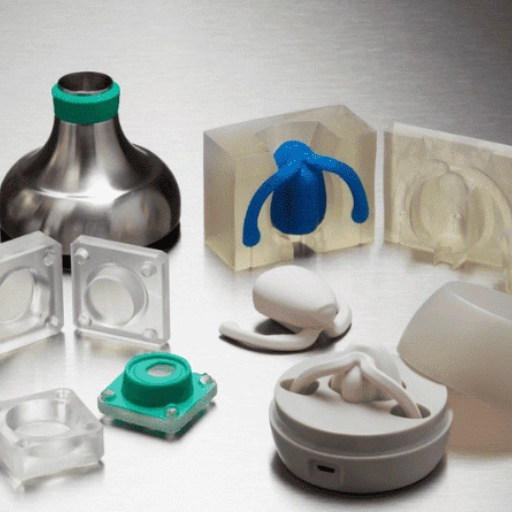
TPE elastomers and silicone can be differentiated in quite a few ways, from their composition and properties to the applications they are used for. TPEs have rubber and thermoplastic materials; thus, they are flexible and lightweight, making them easy to recycle. They are affordable, making them optimal for uses with low durability and low application volume. However, silicone is an oxygen-rich elastomer, making it hardcore and resistant to high temperatures, UV rays, and harsh chemicals. For demanding environments where high durability and thermal stability are a must, silicone is perfect. Silicones are quite the opposite of TPEs as TPEs have a much lower cost but have less long-term effectiveness, whereas silicone has high long-term effectiveness but at a high price.
Comparing heat resistance and temperature ranges
When comparing its ability to withstand heat and temperature ranges, Silicone categorizes itself in a different league. The range that silicone covers is also imposing, ranging from -60°C to 230°C (-76°F to 446°F), which means it’s easily applicable for places with extreme heat. While TPE, on the other hand, are not widespread, they do serve a broader range of purposes, but their heat ranging capabilities are not as broad, with a maximum of 120°C to 150°C (248°F to 302°F). This gap between the two proves that silicone is perfect for automotive, aerospace, and medical areas where nature requires a stable temperature.
Evaluating chemical resistance and durability
Silicone outshines TPEs in exposure to chemical agents, oils, and solvents and is durable enough to withstand extreme chemical environments. The organic composition of silicone gives it durability in extreme chemical environments right from its synthesis. TPEs show better performance in non-extreme conditions; however, depending on the formulation, TPEs have varying performance to chemicals, but performance degradation may occur with time. Consequently, silicon rubber can be used in critical applications that require prolonged chemical exposure.
Analyzing flexibility and elasticity differences
In terms of elasticity and deformation resilience, silicone comes on top due to its heat resistance and elasticity while retaining a high level of reliability within a specific range of temperatures. Silicone’s organic polymer composition allows it to revert to its original shape after being subjected to extreme conditions. Thermoplastic elastomers (TPEs) are elastic but vary depending on the application and the amount of stretching. TPEs perform well in applications requiring flexibility; however, silicone may be a more favorable option in some critical situations.
How Do Manufacturing Processes Differ for TPE and Silicone?
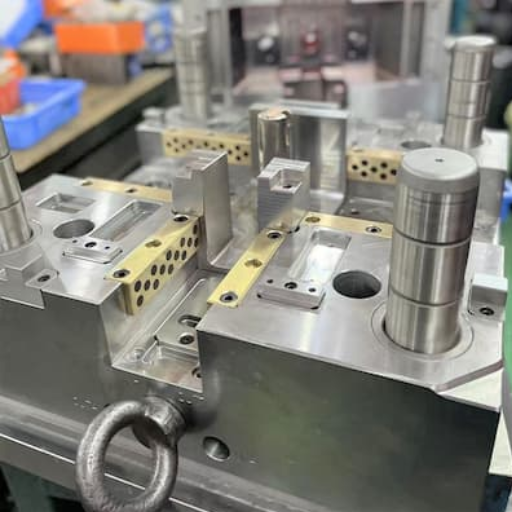
The most significant distinction between TPE and silicone polymers is raw material composition and molding/casting methods. TPE is produced by employing either injection molding or extrusion processes, which are known for their speedy production processes and allow for intricate designs to be molded. Both injection functions benefit from TPE’s thermoplastic properties, allowing for repeated remolding. On the other hand, silicone is molded by employing vulcanization or curing via compression or liquid injection molding processes. This utilizes heat and pressure to link the molecules, turning them into a tough thermoset that is set and cannot be remolded. TPE, on the other hand, is cost-friendly as it’s faster to manufacture, while silicone, on the other hand, is better for heat resistance and long-term stability due to its curing process.
TPE injection molding vs. silicone injection molding
Regional disparities exist in TPE and silicone molding for materials, processes, and end products. TPE (thermoplastic elastomers) injection molding has thin walls, which allows the TPE to be molded easily. Economically friendly TPEs also enable reduced molding costs and accelerated turnover timing. TPE is also an ideal material as it is removable, making it suitable for prototyping and mass production since there is little waste. Also, the ability of TPE to be molded under low pressure means that more intricate and delicate structures and shapes can be made quickly.
It should be noted that silicone injection molding, on the other hand, is selective in its usage, typically employing a vulcanization procedure characterized by more significant heat and longer curing times. Toys, equipment, and medical devices made from silicone materials have excellent thermal stability and flexibility, providing outstanding resistance to sunlight, extreme temperatures, and corrosive environments. These qualities make silicone suitable for critical medical, automotive, and aerospace applications.
The decision between TPE and silicone injection molding will rest mainly on project factors such as production sizing and volume, design intricacy, environmental factors, and the product life duration.
Curing process: Thermoplastic vs. thermoset materials
In the raw form, however, the curing of thermoplastics through molding devices is significantly dissimilar compared to thermoset materials, as the behavior of the polymer chains differs considerably before and after molding. Thermoplastics do not undergo any chemical cross-linking reaction as in curing. Instead, they are heated to their melting range – relief of permanent set – and then cooled, which is a reversible cycle. This means they can be re-melted and re-formed without significant material performance compromises, and the process can be done a few times.
Conversely, thermosetting materials use irreversible chemical cross-linking to set and solidify when supplied with heat, pressure, or curing additives. This process boosts thermosets’ strength, heat resistance, and dimensional stability. However, due to this cross-linking, thermosets cannot be remelted or reshaped, fundamentally differentiating them from thermoplastic materials regarding their recyclability and reusability. The choice between the two depends on the application needs, such as tensile strength, thermal resistance, and flexibility in manufacturing.
Reprocessing capabilities: Can TPE and silicone be recycled?
TPE (thermoplastic elastomers) and silicone are separable, but not all are recyclable. The likeness of both sets of materials to be reshaped through heat makes the former easier to recycle. However, silicone is not easy to recycle but can be done using specialized industrial processes that are not widely accessible. The extent of recycling protocols available for TPE and silicone essentially fits into the local context in which they are situated and the material formulations available within them.
Which Material is Better for Medical Applications?
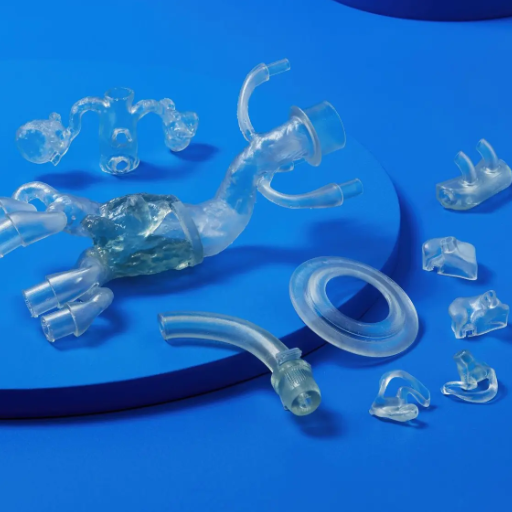
There are times when plastic outweighs silicone in terms of its use for specific medical applications and vice-versa. For instance, silicones make excellent materials for implants, tubing, and any long-term use within the body. They are biocompatible, flexible, and resistant to extreme temperatures and microbial growth, which is crucial in healthcare systems. In comparison, medical-grade polymers such as polyethylene and polycarbonate are very cost-efficient, strong, and easy to sterilize, which makes them favorable to plastic. It should be noted, however, that plastics have disadvantages in biocompatibility and heat resistance compared to silicones. Therefore, the mechanical role of the item, the frequency of its application, and its functionality in style on the human body are the final determinants in this case.
Comparing the biocompatibility of TPE and silicone
As far as elastomeric materials are concerned, Thermoplastic elastomers (TPE) and silicone rubbers have been reported to be safe for application in both medical and industrial sectors. TPE has been advantageous because of its greater ease of processing, better flexibility, and lower cost elements; however, TPE is not ‘bio’ safe in all cases, which depends on how it is made, and it has to go through additional conversions to achieve the applicable standards for rigid medical grade materials. On the contrary, silicone rubbers are bio-safe materials with outstanding properties to limit the effects of very high and very low temperatures. These superb properties allow its use for an extended period. In addition, silicone rubbers tend to be safer because they will not leach out any possible noxious chemicals, making them ideal for implants in soft tissues. In selecting whether to use TPE or silicone rubbers, the amount of flexibility required, the length of contact, and the manufacturer’s approval must be determined.
Sterilization methods for TPE and silicone medical devices
In terms of sterilization, there are numerous effective methods for TPE (thermoplastic elastomers) and silicone, which depend on the material’s tolerance and application. For TPE, the methods frequently used include ethylene oxide (EtO) sterilization and gamma radiation. TPE is usually not heat resistant; therefore, specific formulations can take high temperatures, such as when using autoclaving. In contrast, silicone is much more diverse and can undergo a broader range of sterilization procedures. Autoclaving (steam sterilization), dry heat, ethylene oxide-gas sterilization, and gamma radiation because silicone resists heat and chemicals. One should also be mindful of the regulatory framework and the use of the device while choosing a method for sterilization to avoid incompatibility and loss of functionality.
FDA regulations and compliance for TPE and silicone in healthcare
The integration of TPE and silicone into healthcare management is subject to regulation by the FDA to provide certainty concerning safety and efficacy. For TPE, compliance typically entails confirming biocompatibility through USP Class VI certification and leachables and extractables testing. On the other hand, silicone utilized in the construction of medical devices must be tested following the standards of USP Class VI and the requirements of ISO 10993. Moreover, it’s an obligatory requirement to comply with provisions of FDA 21 CFR regulations that regulate materials intended to come in contact with patients. The process of documentation, painstaking validation testing, and good manufacturing practice are essential for obtaining FDA clearance or concurrent approval concerning devices made of such materials.
What are the Cost Implications of Choosing TPE vs Silicone?
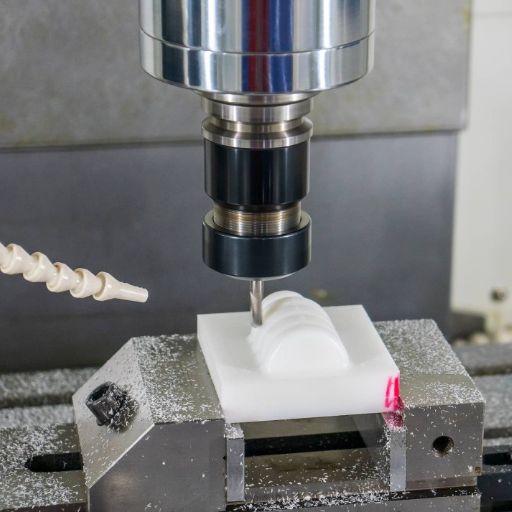
When considering the costs, the first question is switching from TPE (Thermoplastic Elastomers) to silicone. As a general rule of thumb, TPE is the least expensive elastomer because of its relatively cheap material and processing costs, allowing for shorter and more cost-effective production cycles. Conversely, silicone is costly to use and integrate because of its relatively complicated curing process and high initial capital outlay for the required equipment and raw materials. Nevertheless, in uses that demand better durability, chemical resistance, or thermal stability, silicone might be worth its higher price in the long run by reducing maintenance and replacement in the first place. Ultimately, it’s not the material cost that dominates the choice but rather the requirements of the particular application and the total life cycle cost analysis.
Initial production costs: Molds and equipment
Manufacturing plastic parts optimizing for mold quality and specialized machinery applications presents vast costs at inception. Wind-up production of a mold is about machining designed to a complexity level that depends on features such as the type of material to be used, like aluminum or steel, the required mold or tool being produced, and the number of pieces to be made. While steel molds are considered expensive, they are more durable, allowing large-batch manufacturing for aluminum molds. This is an essential feature as they can only be produced on a small scale. Casting and molding also amount to the cost incurred, like curing units or casting machines, depending on how the part hits the assembly line. These tools require stringent supervision and calibration, so maximum consistency and efficiency can never be maintained. Evaluating materials and techniques for implementing tools needs to be done to reduce the initial cost and consider the machinery used to boost production over long periods.
Long-term cost considerations: Durability and replacement frequency
When predicting the long-term cost, consider key aspects of the durability of materials or equipment that significantly impact the edge. Although tools and machinery may be heavy on the pocket at purchase, they tend to be low in number for replacements due to their excellent durability. For future problems, I advise looking into a product with time-tested reliability while ensuring a quality certification with a manufacturer warranty for a cost cut later. Ensuring maximum efficiency and minimum replacement costs requires durable materials and equipment and the correct maintenance practices.
Energy consumption in manufacturing: TPE vs silicone production
How TPE and silicone are manufactured affects energy consumption, and there are some profound differences between them. TPE is manufactured through auto extrusion or injection molding, which allows the material to be reshaped repeatedly by melting it into a liquid. This method is the reason why thermoplastic materials consume less energy when made. Moreover, as no cross-linking or curing is processed, the process is less energy-demanding. Because of their low melting temperature, finishing, producing, and processing require less energy.
On the other hand, silicone vulcanization involves soaking the material in higher temperatures, which helps turn the material into a liquid and then yields permanent linkages. This method consumes a lot of energy, which results in higher energy consumption overall. Moreover, silicone cannot be recycled, whereas TPE can be recycled, and this affects the economy because, in turn, this will raise energy consumption and degrade resources.
TPE provides an excellent energy-efficient process. However, there are some instances where the properties of silicone matter more than the energy costs contained, and the properties that matter most often are thermal and chemical stability. Performing end-use requirement analysis helps understand which material better suits the performance and sustainability objectives. Through these processes and garget analysis, the required replacement can be obtained.
How Do Environmental Factors Influence the Choice Between TPE and Silicone?
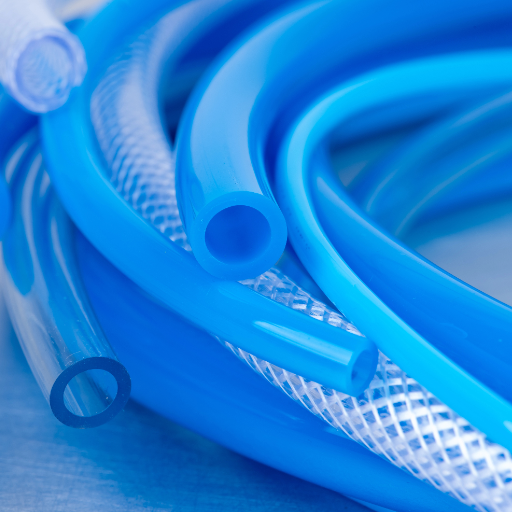
Regarding their environmental applicability and impact, the distinction between TPE and silicone varies based on the temperature and strain the two can withstand. Due to TPE being environment-friendly, easily recyclable, and having a relatively low melting temperature, it is a better alternative for applications requiring only some flexibility and heat resistance. On the other hand, silicone has the highest melting point. It is minimally recyclable but is best suited for applications in aggressive environments as it is best known for providing a shield against strong chemicals, UV radiation, and high-temperature environments. Ultimately, the application’s performance outweighs the environmental factors and requirements.
Sustainability and eco-friendliness of TPE vs silicone
All in all, TE and silicone possess varying degrees of eco-friendliness and sustainability. The differences can be based on the production process and depopulation. TPE has a lower carbon footprint due to its recyclability, while production emissions are lower than silicone emissions. One defining factor affecting such an outcome would be the product’s durability; to put it simply, TPE tends to have shorter durability and lifespan than silicone.
In contrast, silicone is an energy-intensive component and is not as readily recyclable. Nevertheless, silicone endures great mechanical strain and can withstand corrosion due to its chemical structure, which leads to little material being lost when used for a long time. On its own, silicone is non-toxic, allowing for some mid-grade silicone to be used in medical and food-grade applications, considering it is not eco-friendly. Relative evaluations demonstrate that the sustainability of each material is qualified mainly by the specific use of the material and the preference for either recyclability or durability of the material.
Biodegradability and end-of-life considerations
While both have distinctive characteristics that consider the end of life, a strict requirement is biodegradability. Silicone isn’t eco-friendly, but it doesn’t biodegrade. However, it does decompose into non-toxic dioxa, and it takes a very long time to do so, which is still better than traditional plastics. In contrast, some bioplastics are resistant to combustion within the natural environments but can withstand the heat in the industrial composting chambers designed for them. Still, a wide range of such facilities is lacking. Ultimately, it is up to whether the recyclability issue or the potential adverse effects on the environment after a long term are more painful to the application.
Carbon footprint comparison of TPE and silicone production
Variations in raw materials, production activities, and energy levels result in a significant difference in the carbon footprint of thermoplastic elastomers TPE and Silicone. TPE, for instance, is mostly from petrochemical composition and is less energy-consuming in production processes than silicone. However, TPE manufacturing still has significant greenhouse gas emissions related to extracting and refining fossil fuel resources.
Contrary to TEP, Silicone is made from plentiful quartz sand. The disadvantage is that silicone produces a high greenhouse emission. On one side, industries where chemical transformation occurs to turn silica into silicone contribute much pollution in a single unit. Conversely, silicone has a long life and is very durable. Relating to the previous aspects, however, its pollution in production is more damaging, though the durable aspect counterbalances the pollution in the long run.
To summarize, TPE can still contribute indefinitely with lower initial carbon emissions, but silicone, on the other hand, is durable, and its low emissions need hardly any replacements as its use lasts long. The best possible choice is identified depending on the intended use life as well as the requirements of the application.
Which Industries Benefit Most from TPE or Silicone?
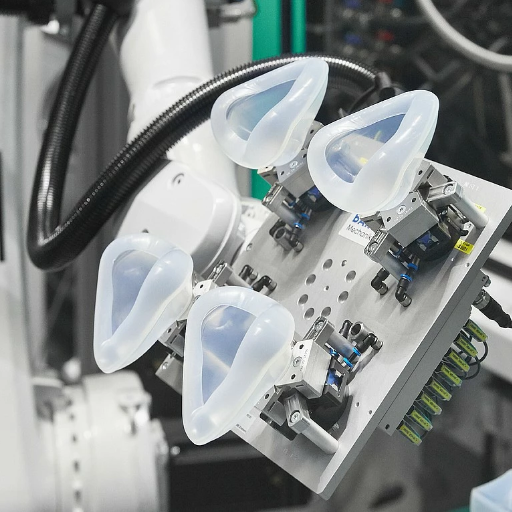
TPE can be significantly appreciated in industries prioritizing flexibility, lightweight materials, and cost-effectiveness. For example, in the automotive sector, TPE is used for gaskets, seals, and interior components due to its ease of mold and ability to be recycled. Similarly, consumer goods companies tend to incorporate TPE on toothbrush grips and wearable bands because of its soft touch and versatility.
At the same time, silicone is popular in industries that require durability, heat, and sterilization. Within the medical sector, silicone is often used in tubing, implants, and other medical devices to avoid rejection by the body. Furthermore, silicone is used in the food and beverage industry for bakeware and sealing materials because it is non-toxic and heat resistant. Each type of material fulfills the specific needs and requirements of the particular product, hence underlining the importance of choosing the correct material for the best efficiency and sustainability.
Automotive applications: TPE vs silicone parts
When evaluating TPE and silicone in their application in automotive engineering, it is evident that the performance expectations and environmental conditions determine the choice between these two. In most cases, TPE is preferred when the end products must be lightweight, flexible, and cheaper. The material finds application in airbag covers, cable sheaths, and gaskets due to ease of fabrication, recycling, and efficiency under moderate temperatures, providing sufficient satisfaction. Moreover, the fact that it can be shaped into specific forms helps the manufacturers achieve design goals.
On the other hand, Silicone finds application and performs well under severe automotive conditions engulfed with thermal extremes or exposure to harsh chemicals. Its high-temperature tolerance suits engine parts, turbocharger hoses, and seals in high-stress environments. For applications requiring long service life, especially for weather sealing, vibration isolators, and grommets, silicone is preferred to TPE as it is flexible and retains its mechanical properties for long periods.
To conclude, there’s a takeaway: you can choose between TPE and silicone based on the application’s requirements. TPE is cheap and easy to manufacture, but silicone is the better solution for parts that can withstand thermal swings and mechanical strain in some applications.
Consumer goods: When to use TPE or silicone
If you’re torn between TPE and silicone for your next consumer good, it all comes down to the application and desired performance. TPE is great for toothbrush grips, specific kitchenware handles, or even toys, where a more lightweight and flexible material and its stronger economics are preferred. However, there’s no competition when one needs materials designed to be heat resistant, such as a baking mat or food containers. Hence, silicone is reinforced. Both materials have their positives, but not only does silicone have a firmer grasp when it comes to high heat or after long periods, but TPE also works best for designs that require both ergonomic and cost-efficient parameters.
Aerospace and high-performance applications: Material selection guide
On the other hand, when TPE is out of the equation for high-performance or aerospace applications, we have a higher preference for thermal stability, chemical resistance, and mechanical strength. This is where silicone proves its worth, withstanding up to a temperature of -75 degrees and exceeding it past 500 degrees while not compromising elasticity. Although TPE is excellent due to its weight and lightweight, it’s not the most heat-resistant material, which is a factor in choosing materials for critical aerospace components. So, we tend to look for the exact requirements of the application and its demands, such as prolonged UV exposure; this is where silicone outshines its competitors, as it has proven to excel in such situations.
References
Frequently Asked Questions (FAQ)
Q: What are the key differences between TPE and silicone materials?
A: TPE (Thermoplastic Elastomer) and silicone are synthetic materials with elastomeric properties but have distinct differences. TPE is a polymer blend that combines plastic and rubber properties, while silicone is a silicon-based material. TPE can be melted and reshaped, whereas silicone maintains its form at high temperatures. Silicone generally offers better heat resistance and durability, while TPE is often more cost-effective and easier to process.
Q: How do TPEs compare to liquid silicone rubber regarding material properties?
A: TPEs and liquid silicone rubber (LSR) have different material properties. TPEs offer a wider range of hardness options and are generally more flexible at lower temperatures. LSR, on the other hand, provides superior heat resistance, better chemical stability, and improved biocompatibility. LSR also maintains its elastomeric properties over a broader temperature range than most TPE formulations.
Q: What are the various applications of silicone and TPE materials?
A: Silicone and TPE materials are used in various applications. Silicone is commonly used in medical devices, cookware, sealants, and high-temperature environments. TPE finds applications in automotive parts, consumer products, sporting goods, and soft-touch grips. Both materials produce flexible tubing, gaskets, and seals, depending on specific requirements such as temperature resistance, chemical compatibility, and cost considerations.
Q: How do silicone and TPE compare in terms of environmental resistance?
A: Silicone generally offers superior environmental resistance compared to TPE. It can withstand extreme temperatures, UV radiation, and harsh chemicals better than most TPE formulations and maintains its properties in outdoor applications for longer periods. However, some specialized TPE compounds can be engineered to improve their resistance to specific environmental factors, making them suitable for certain outdoor uses.
Q: What are the advantages of using silicone over TPE?
A: Silicone offers several advantages over TPE, including higher heat resistance, better long-term durability, and superior chemical stability. It is also highly biocompatible, making it ideal for medical applications. It maintains flexibility at extremely low temperatures and has excellent electrical insulating properties. Additionally, silicone has a longer lifespan in demanding environments and is often preferred for applications requiring consistent performance over time.
Q: When is TPE material the right choice for an application?
A: TPE is the right material choice when cost-effectiveness, ease of processing, and recyclability are essential factors. TPE is ideal for applications requiring a soft-touch feel, flexibility, and moderate chemical resistance. It’s particularly suitable for consumer products, automotive interiors, and applications requiring frequent material recycling or remolding. TPE also offers advantages in overmolding applications and can provide a good balance of properties for many general-purpose elastomeric parts.
Q: How do silicone and TPE differ in terms of manufacturing processes?
A: The manufacturing processes for silicone and TPE differ significantly. TPE can be processed using traditional thermoplastic methods such as injection molding, extrusion, and blow molding. It can be quickly melted and reshaped for efficient production and recycling. Silicone, particularly liquid silicone rubber (LSR), requires specialized molding equipment and typically involves curing. While this can make silicone production more complex, it allows for the creation of highly detailed and durable parts.
Q: What are the cost implications of choosing between silicone and TPE?
A: Generally, TPE materials are less expensive than silicone regarding raw material costs and processing expenses. TPE production typically requires less energy and can be faster, lowering manufacturing costs. However, silicone’s long-term durability and performance in harsh environments can offset its higher initial cost in specific applications. When choosing between silicone and TPE, it’s essential to consider both the immediate production costs and the long-term performance requirements of the application.

